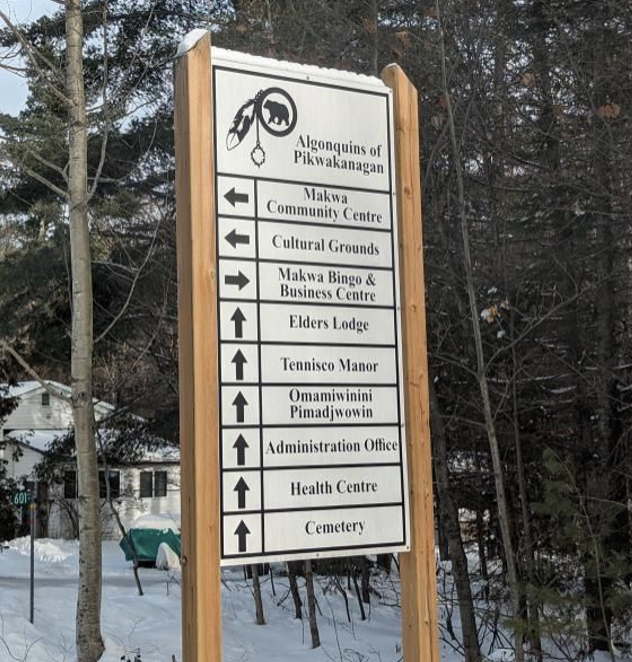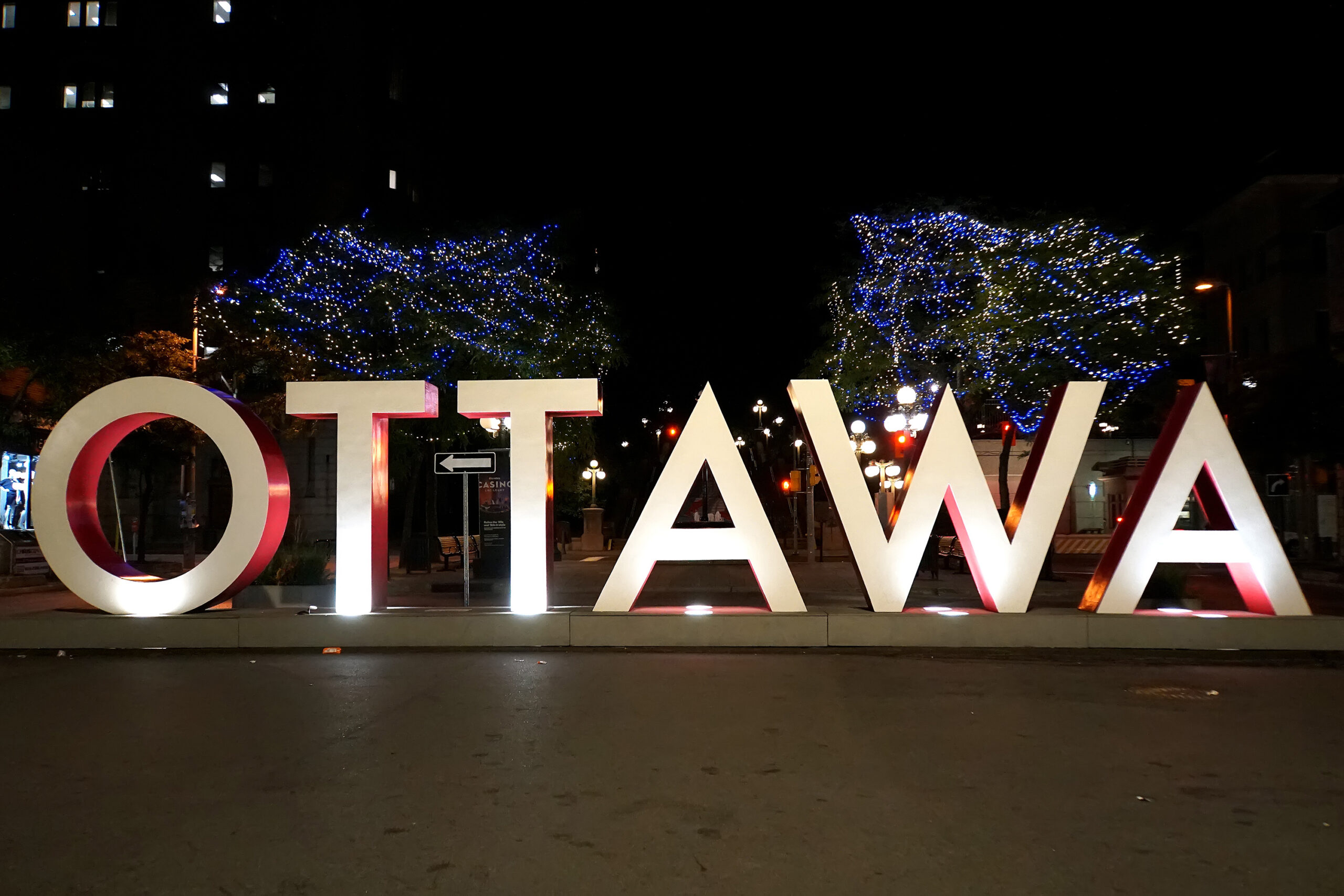Our Partnering Communities
Carleton’s School of Journalism and Communication gratefully acknowledges the support of the Algonquins of Pikwàkanagàn First Nation, Mohawk Nation of Akwesasne, Kitigan Zibi Anishinabeg First Nation, and First Nation/Metis/Inuit communities in urban Ottawa.

Akwesasne
Akwesasne, a Mohawk Nation territory situated along the St. Lawrence River, about 120 kilometers southeast of Ottawa, boasts a distinctive geographical location. Prior to colonization, their territory spanned across northeastern New York State and Vermont, into southern Canada. The Mohawk peoples have long utilized this area, particularly the confluence of the St. Lawrence River Valley, for fishing and hunting.
Today, Akwesasne is divided by international and provincial borders, with the provinces of Quebec and Ontario on the Canadian side. The Mohawk Council of Akwesasne governs the Canadian portion, while the St. Regis Mohawk Tribe oversees the territory in New York. Today Akwesasne has a total of 23,000 residents, with the largest population and land area of any Kanienʼkehá:ka community.
The Mohawk people of Akwesasne maintain rightful claims to territory beyond current reservation boundaries, safeguarding these lands through legal processes such as the National Historic Preservation Act and the Environmental Protection Act. Akwesasne is renowned as the “land where the partridge drums.”


Kitigan Zibi Anishinabeg First Nation
Kitigan Zibi is an Algonquin First Nations community located beside Maniwaki, Quebec. It’s mostly concentrated around Highway 105, about 150 kilometers northeast of Ottawa. The current registered population of the community is over 3,600 members.
Like many Indigenous communities, Kitigan Zibi has faced challenges related to land claims and sovereignty. Kitigan Zibi never signed a treaty. The community is engaged in ongoing negotiations with the Canadian government to address historical grievances and assert their rights to traditional lands. Small parts of Maniwaki have been added to the Kitigan Zibi reserve since the 1990s, and the federal government is set to pay $116 million in land settlement claims.
Kitigan Zibi is governed by a Chief and a six-member band council elected every two years.
Kitigan Zibi roughly translates to “Garden River,” reflecting the community’s lush surroundings and culture deeply rooted in traditional practices such as hunting, fishing, and gathering.
Algonquins of Pikwàkanagàn First Nation
Pikwàkanagàn First Nation is an Algonquin First Nation on the shores of Golden Lake and the Bonnechere River in Renfrew County, Ontario, located about 150 kilometers northwest of Ottawa. The Algonquins of Pikwàkanagàn are the only federally registered Algonquin community in Ontario. Its current registered population is over 3,800 members, and there has recently been a large increase in membership requests.
Pikwàkanagàn is governed by one Chief and six councilors elected every three years. Their mission is, “To provide effective and fair Algonquin Government for the benefit of the First Nation.”
In 1983, the Algonquins of Pikwàkanagàn launched a comprehensive land claim which includes an area of nine million acres within the watersheds of the Kichisippi (Ottawa River) and the Mattawa River in Ontario, an unceded territory that covers most of eastern Ontario, including the city. The Algonquins of Ontario (AOO) alongside the federal and Ontario government are working together to resolve this land claim through a negotiated settlement.


Urban First Nation/Métis (Ottawa)
The City of Ottawa was built on the unceded territory of the Algonquin peoples. The city’s name is derived from the term “adaawe,” which means “to trade” in Anishinàbemiwin. It has long been an important location for commerce among various Indigenous communities.
Indigenous people in Ottawa come from a wide range of communities with different histories and cultures. According to recent census data, the Indigenous population of the city is over 46,500.
Significant aspects of Indigenous political engagement and organization within the city revolves around federal politics. To combat this, the Ottawa Aboriginal Coalition was formed in 2001 to bring a unified voice for urban Indigenous people.
Urban Inuit (Ottawa):
Thirty per cent of Inuit in Canada live outside Inuit Nunangat. Many of them have moved due to food scarcity, difficulty finding employment, and shortage of access to medical and dental services in the North. However, there has been a lack of Inuit-specific Indigenous services in the south.
The National Capital region is home to the biggest Inuit community in southern Canada. The number of Inuit in Ottawa is disputed, because Inuit living in Ottawa who have multiple Indigenous identities are not included in a population survey. It is estimated to be over 3,000.
Tungasuvvingat Inuit was established in 1987 as an Inuit-specific urban service provider in the city. Kinship also serves as a foundation of Inuit social organization.

